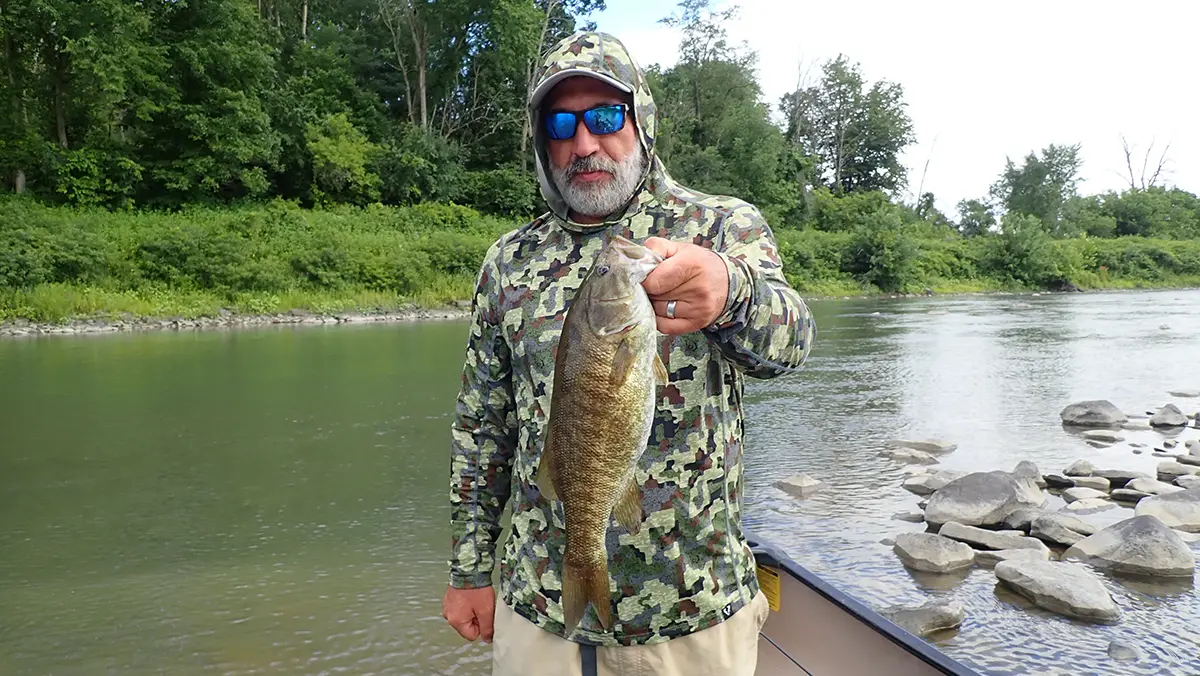One of my favorite places to fish is a nondescript creek that runs through Central New York. There’s nothing particularly special about it; it’s like millions of other small streams throughout the United States. But at certain times, it becomes magical with fish concentrated and hungry. On a recent trip, a friend and I caught well over 100 smallmouths in an eight-hour period.
This was no isolated incident — this pattern sets up every year. The summer heat means low water in many creeks and rivers. This congregates smallmouths and other fish in the deep holes that remain, and fishing can be as hot as the temperatures. Finding, and fishing, one of these holes can result in the kind of day that gets you through the depths of winter. Here’s how to find your own summertime honey hole on your local creek and catch smallies till your arms are sore.
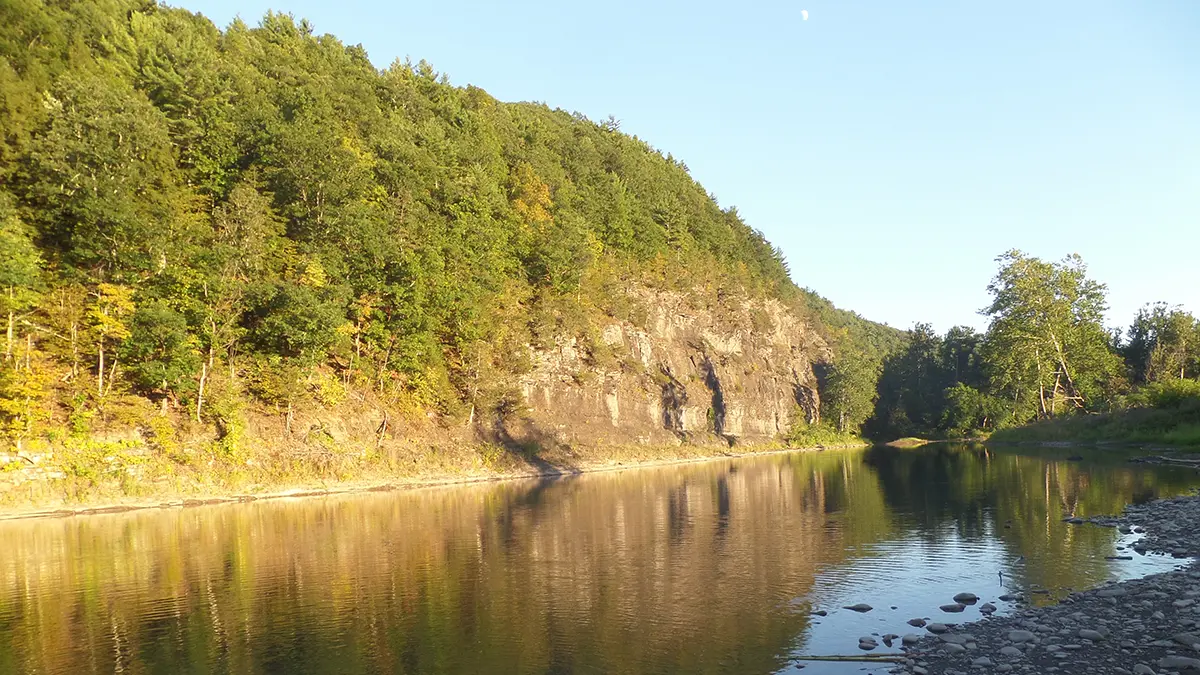
FINDING HONEY HOLES
Of course, the best way to figure out a waterway is by fishing it. But you can cut down on the learning curve by using online resources such as your state fish and game website or Google Maps. If the river or creek is big or popular enough, there may be survey or bathymetric data available. You can use that to find the deep holes and get straight to catching. If not, you’ll need to look for more clues.
Generally, the land under the water follows similar contours to what you can see above it. So if the creek is bordered by a sharp cliff, it’s a fairly safe bet that the drop off continues as steeply underwater. Looking for these cliffs on topographic maps and satellite photos can save you some gas and shoe leather.
You can scout for these using Google Maps, toggling between layers to verify the contour change. Switching to satellite view will help you find boulder fields, blowdowns, or other likely structures before you hit the water.

WATER FLOW
One of the keys to this equation is figuring out the low-water periods. Even if a river is unfamiliar, you can probably learn the relative flows by checking on the USGS website. They have water data for about 1.9 million sites nationwide, so odds are pretty good you can find your local stream on it.
Set the tab to show the flows for the year, then alter it so it shows the previous week. This will let you know if the river is low enough to concentrate the fish.

ACCESSING CREEKS
Once again, you can turn to the internet for advice on accessing streams and rivers for fishing. Many states have this data posted online, highlighting ways to get to the water. These can be rights of way through private land, purpose-built parking lots, or boat ramps.
I’ve also had luck asking farmers for permission to fish a stream that runs through their property. Generally, they are fine with it as long as you don’t make a mess. So do yourself, and everyone else, a favor and leave the area cleaner than you found it. I also found that giving a farmer/landowner some cold beverages in exchange for their generosity is always appreciated.
Speaking of boats, floating a creek is an excellent way to fish it.
Canoes and kayaks are great for this, as well as a 10 foot jon boat. Inflatables are another great option. But that same low water that makes fishing so productive can make navigation difficult. Be prepared to get out and walk alongside the vessel, or possibly even portage it in the skinniest spots.
The current should be slow enough that you can paddle back to the launch, but if you take two vehicles, you just float downstream and get out at a suitable spot. Bring an anchor so you can concentrate on likely sections, and be prepared to hop out and fish on foot.
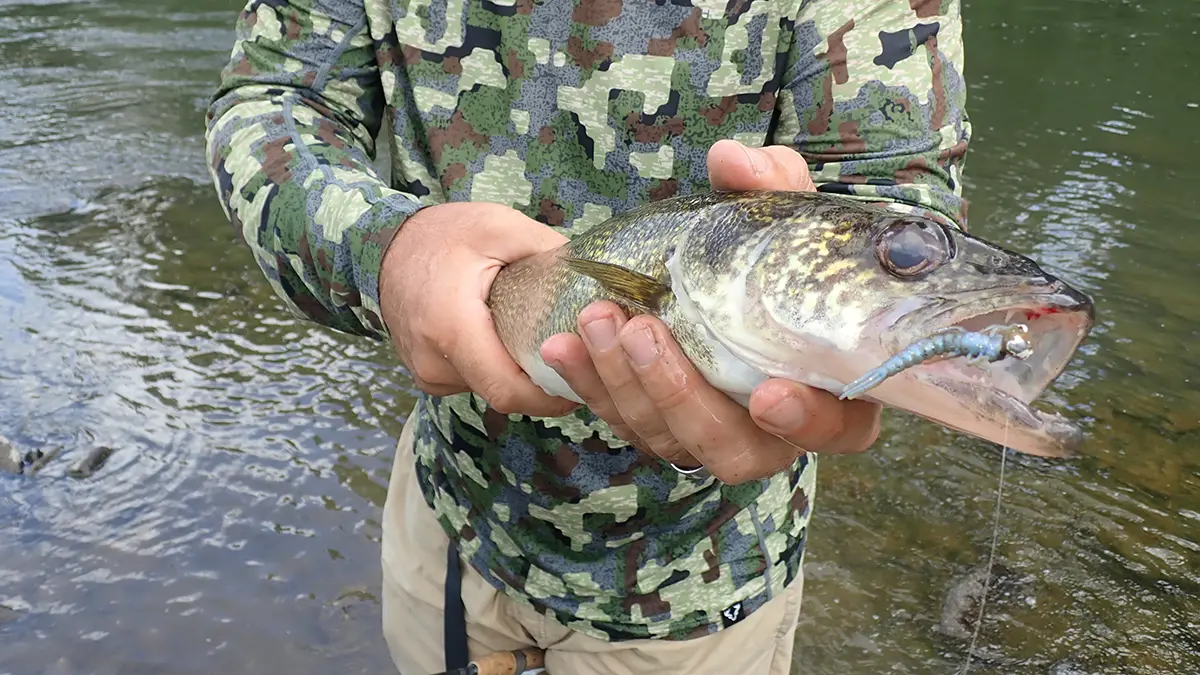
GEAR AND TACKLE FOR FISHING CREEKS
Whether you take a boat or hoof it the whole time, the right footwear is an essential piece of gear. The warm weather doesn’t lend itself to waders, but wear them if you’d like and can stand the swamp-ass.
I typically go with swim trunks and quick-drying shirt. I used to lose a toenail or two every year to submerged boulders, so I’ve taken to wearing wading boots with a pair of neoprene socks to protect my feet instead of sandals.
You can also go with a pair of wet wading shoes, like the Pursuit model from Simms, which are much lighter but still offer protection.
Tackle for fishing creeks is simple. I tend to hit the stream with a handful of baits, and a rod or two at most.
RODS
Many creeks are perfect for ultralight rods, and I’ll use one wherever possible to up the fun factor. But if necessary, I will bump it up to a medium-heavy stick depending on the size of fish or baits needed. Because of the sometimes narrow confines of small creeks, shorter rods are better. A 6-footer is great, but rods as short as 4 feet, 6 inches can have their place.
REEL
Opt for the lightest reel you can to balance with the light rod, but ensure it has a smooth drag as you can encounter some pretty big fish.
LINE
You can certainly load up your reel with mono, but the sensitivity offered by braid is ideal for light biters. I prefer Power Pro, in 8-pound test. Because of the rocky bottoms, I’ll use a 4- to 6-foot fluorocarbon leader for its abrasion-resistance. I will go as light as 4-pound test if the creeks are gin-clear, but will typically use 8-pound. I secure the two with a uni-to-uni connection, and change leaders frequently due to nicks from submerged hazards.
PACK
I can cover as much as three miles on foot in a morning, especially if the holes are spread apart. So I keep my gear in a fanny pack, backpack, or other small organizer, which lets me be mobile. Store terminal tackle in utility boxes and stash your soft plastics, water bottle, and lunch in the remaining space.
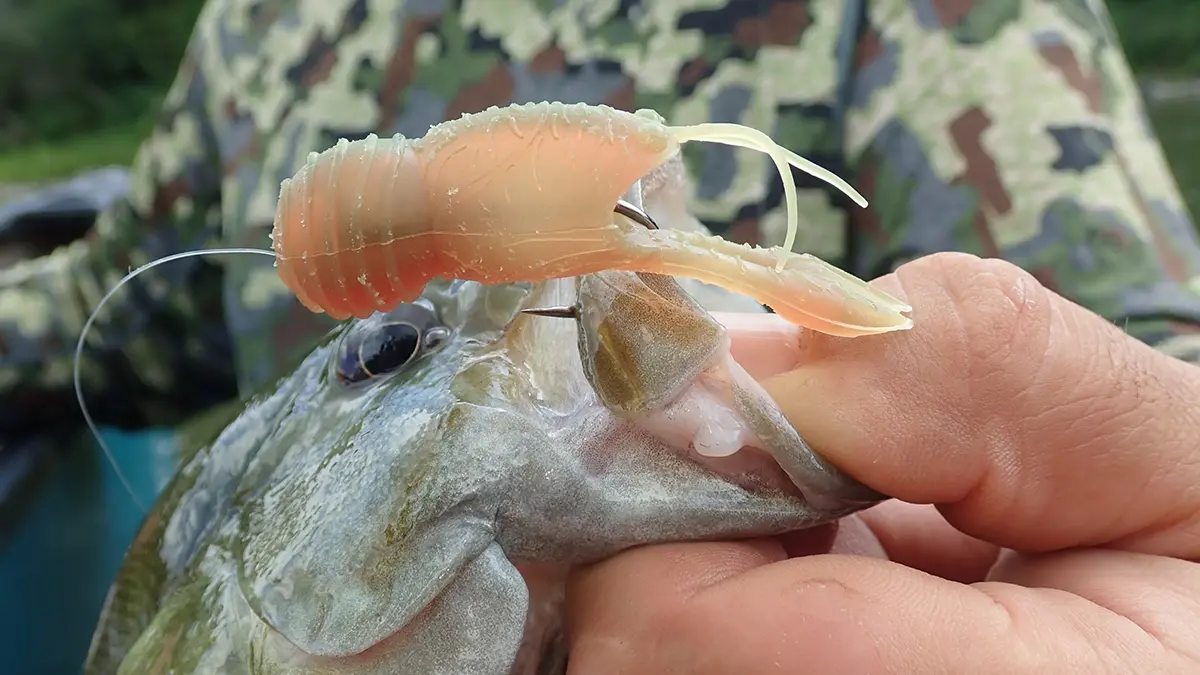
MATCH THE SMALL CREEK HATCH
It’s no secret that imitating the forage species is often the key to getting bit. In many creeks throughout the country, crawfish are the dominant prey species. Rebel’s Crawfish is an ideal hard bait to fish pools; the lip gets it to the bottom and it bounces off of rocks. Cast these up or across current and work them back in short jerks to mimic the fleeing bugs.
I’ve also used a variety of tubes over the years, which do a good job of emulating freshwater shellfish. YUM’s CrawBug is an old favorite, but recently I’ve been using Great Lakes Finesse Juvy Craw with great success. It’s also the most durable tube I’ve ever used; I think I caught over 30 smallies on one and it didn’t break. Strike King’s Bitsy Tube is another proven model, excellent crawled along bottom as slowly as possible. I fish all of these on the lightest jighead possible, favoring the Great Lakes Finesse Mini Pro Tube Head in 1/8 ounce.
Insects are another big part of a stream smallmouth’s diet. Fly fishers were the only ones able to take advantage of that until Rebel introduced their Liveflex Creek Creature series. These unique baits imitate the nymphal stages of insects that stream-dwelling fish gorge themselves on, and they were responsible for the lion’s share on my recent triple-digit fish day — including a surprise walleye that I caught in a run not more than 18 inches deep. The unique, keg-shaped head did a really good job at staying on the bottom without getting stuck: the key to getting bit.
Of course, minnows are eaten by just about every predatory fish. Yo-Zuri’s floating Pin’s Minnow in the smallest sizes tempts everything you’ll find in a river, and has taken everything from big brown trout to largemouths for me. Rapala’s original Floating Minnow has been another consistent performer, fished as erratically as possible. Zoom’s Super Fluke in white is a perennial winner, with the added bonus of being pretty snag-free. Rig these weedless to ensure it doesn’t get hung on the rocks or other cover.
Topwaters can produce well at dawn and dusk, and have the benefit of not getting hung up on rocks. Rebel’s Pop-R has alway produced for me, worked with short but violent pops and long pauses between. The CrickHopper Popper is another excellent choice, particularly if you are fishing along the edge of a field. The smallest size of Heddon’s Spook, the Puppy, is a good choice for really quiet mornings when too much commotion can put the fish down.
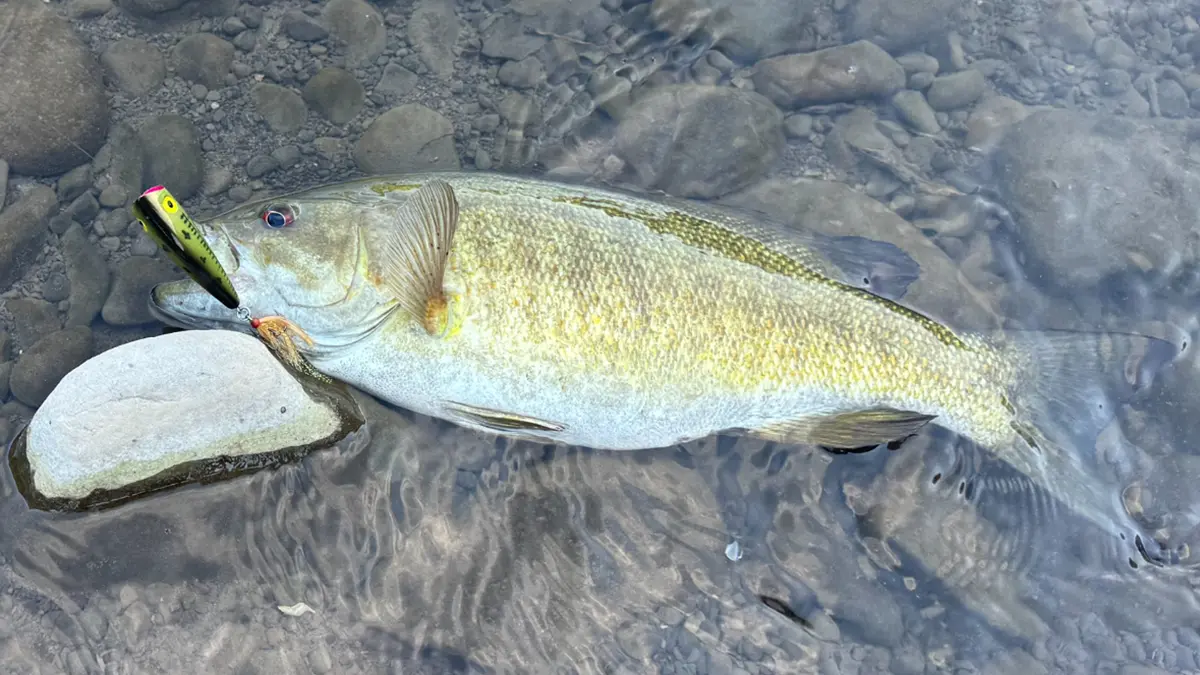
TACTICS TO FISH CREEKS
Targeting the deepest sections of holes is likely to be the most productive, especially during the heat of the day. Fish a sinking bait, such as a tube, and pay attention to how long it takes to hit bottom to find the deep spots. If the tube isn’t drawing strikes, switch to a hard bait such as Pin’s Minnow or Rapala and beat the area up with a variety of retrieves until you find what works. And don’t forget about throwing topwaters here in low-light periods; I’ve had smallies rocket up from 19-foot-deep holes to hit a popper.
The end of a set of rapids is a prime spot to target. The rushing water tends to create a deeper spot that smallmouths set up in and gobble up insects, minnows, or whatever else gets washed downstream. Probe these areas with Rebel’s Liveflex Creek Creature, working it so it just ticks along the bottom. You can also use a Fluke, casting it up into the rapid and working it back with an erratic action.
Boulder fields are another prime smallmouth lie. Even in areas with little current, the smallies will lie in the current break behind a boulder and wait to eat whatever is washed their way. Hit these with tubes or Flukes, working them between the rocks while imparting a wounded action to your bait.
There’s no way around it: You’re going to lose tackle. Over the course of the last couple decades, I’m sure I’ve deposited a few thousand Bitsy Tubes on the bottom of streams. But you need to stay near the bottom to get bit with most baits, so look at this as a cost of doing business. Minimize the loss by casting upstream and working the bait back to you with the current. This is also the most natural presentation, so use it whenever possible.
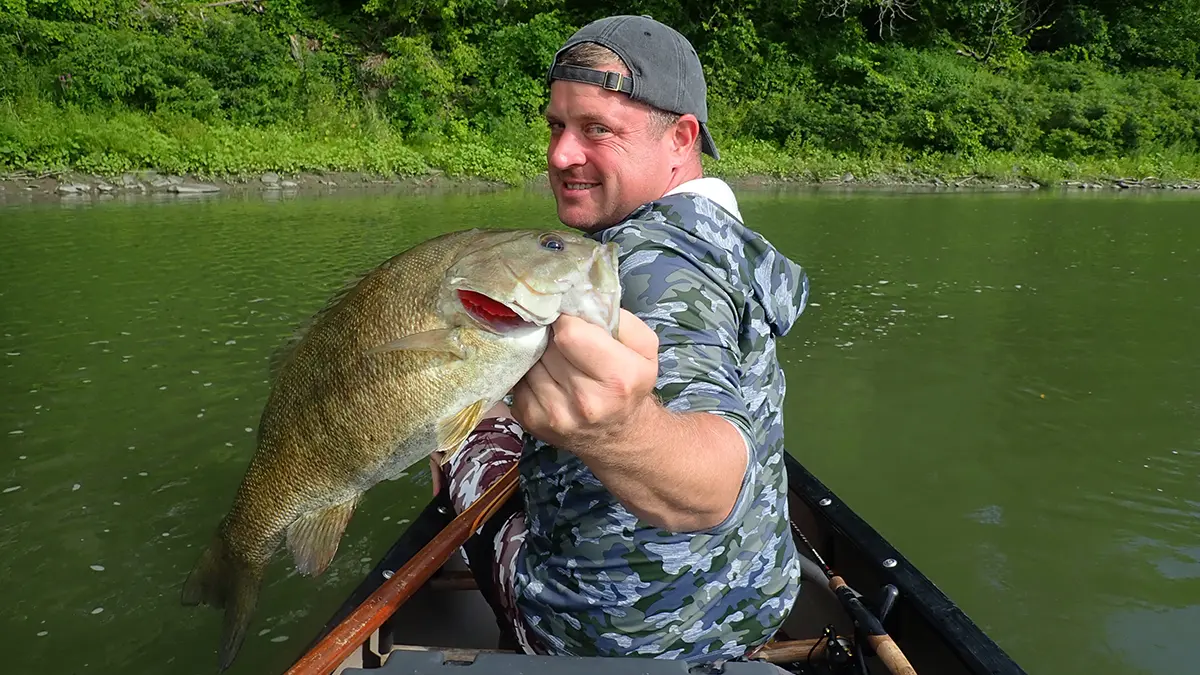
NO TIME LIKE THE PRESENT
Fishing a creek for summer smallmouth is some of the most fun you can have. You don’t need much to get out there; just a rod and a handful of baits. Bring the kids, skip a few rocks and take a swim. Plus, they might be some of the most productive trips of the year.


